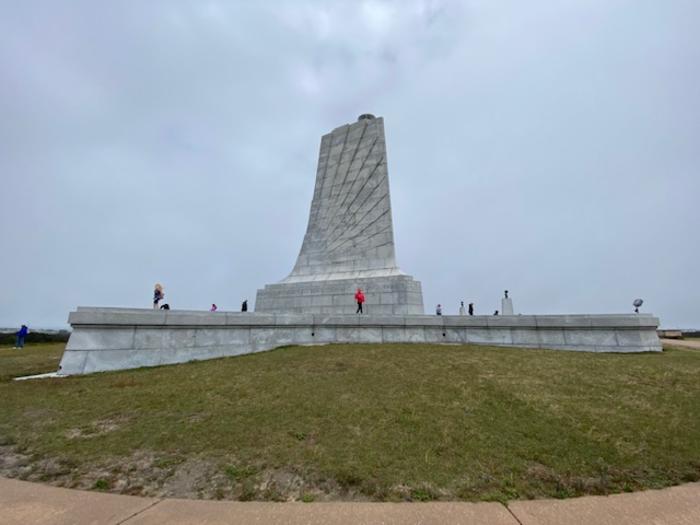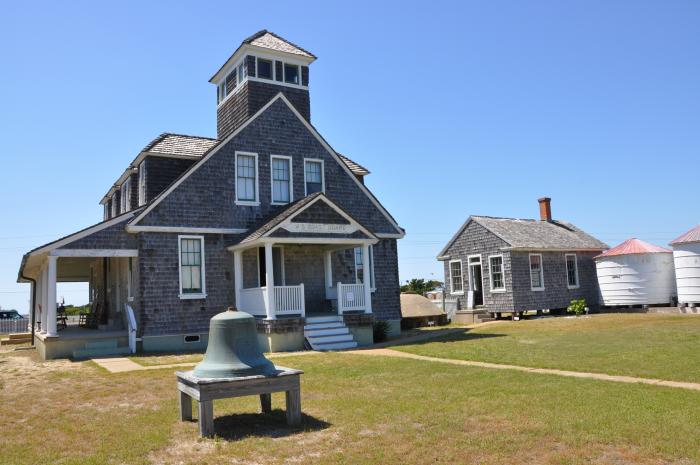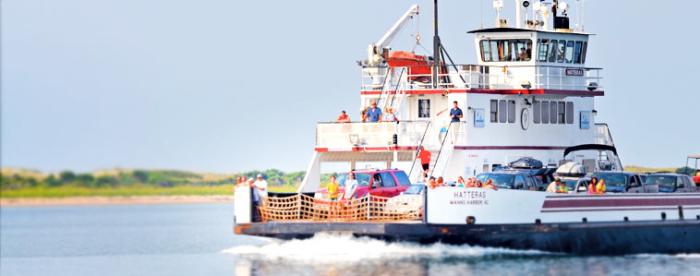A long-awaited visit to the Outer Banks exceeded my expectations. The scenery, the people, the experiences, the adventure, the dramatic light with the dynamic weather all contributed to a glorious trip. Having survived ten years in a wheelchair, I’ve remained aware and intentional about handicapped access in new places and am happy to share what I learned.
Being in a wheelchair or using a walker needn't subvert your enjoyment of outdoor activities. The windswept beaches can be more easily reached with the assistance of equipment from the Kitty Hawk Fire Department. They’ll supply beach wheelchairs (fat tires allow you to traverse the sand) on a first-come, first-served basis. Or rent a beach wheelchair for your entire trip at OBX Beach Mobility, which comes with an umbrella, lap belt, and free delivery.
The generosity found through the fire department’s efforts, throughout this community, truly, revolves around their mission of being great stewards of this environment. They want everyone to be able to enjoy it. The hospitality you’ll experience as a visitor is another precious renewable resource. Once you find your way around based on your physical challenges, you’ll want to return year after year.

An example of how you can get the most out of your Outer Banks experience involves some preparation. I hope this article helps make things a little easier. The single most important thing I learned may be to leave sufficient time for rest and recuperation. If you’re more active here than you are normally at home, you’ll want to take regular breaks and remain well hydrated.
One thing you'll know before you arrive will be the ease of use of your accommodations. While many homes here are on stilts, making a stair climb necessary, call to confirm your accommodations meet your needs. Filter your rental options based on elevator access, large bathrooms, ramps, proximity to public handicap beach parking, and more. The beaches in Kitty Hawk, for example, have easy access for the beach wheelchairs. When you go further south, to Nags Head, for example, more of the properties have stairs that don't accommodate the wheelchairs. To get the most out of your trip time, organize your outings by location. Read our full list of beach and sound accesses.

On the northern tip of the Outer Banks, after crossing the Wright Memorial Bridge, you can experience the Wright Brothers National Memorial (pictured above). The American Council of the Blind recently announced on July 4 that Wright Brothers National Memorial was awarded the 2022 Achievement in Audio Description Award in the Visual Art/Museums/Visitor Centers/Organization category. Accessible exhibits were installed in the National Historic Landmark visitor center at Wright Brothers National Memorial in 2018 and designed with a heavy emphasis on universally accessible experiences, including audio description, Braille brochures, tactile models, manipulative interactive exhibits, expanded audio descriptions & more.
Additionally within the northern beaches, you can visit Monument to a Century of Flight and Aycock Brown Visitors Center, Kitty Hawk Woods Reserve, Jennette’s Pier, Alligator River National Wildlife Refuge, and the most exciting Kitty Hawk Kites. You can visit the Bodie Lighthouse but won’t be able to see the view from the top if you’re unable to climb the steps on your own.
To the West, on Roanoke Island, you’ll have no trouble entering the Aquarium, touring the grounds of the Island Farm, the Fort Raleigh National Park, Elizabethan Gardens, the Lost Colony, Kill Devil Rum, the Roanoke Island Festival Park, Maritime Museum, and Roanoke Marshes Lighthouse. This is one lighthouse with no steps to climb. The water surrounding the lighthouse is home to many sailboats that you can pay to charter for a sunrise or sunset sail. With the caution that, should you have any back trouble whatsoever, you should not go to the bow of the sailboat, sitting with the captain during a sail can be a glorious experience.

On your way to Hatteras, plan to stop in Rodanthe at the Chicamacomico Life Saving Station. It’s a history lesson unto itself, as is the Pea Island National Wildlife Refuge. You may want to stop for one on the way south and the other on the return trip north.
Create your own Hatteras Island day. It’s about an hour’s drive from Nags Head and there’s so much to do. It’s going to be easier if you send someone else to stand in line at the Orange Blossom bakery for your Apple Ugly and drink of choice. You can still go horseback riding on the beach, with advance notice if your left leg is strong enough to mount the horse, the base of the Cape Hatteras Lighthouse, the Hatteras Fishing Village, the Hatteras Weather Bureau Station, and the brilliant Graveyard of the Atlantic Museum.

Time permitting, you can take the hour-long ferry ride over to Ocracoke. The ferry leaves not far from the Hatteras Weather Bureau Station (the guide we met remembers seeing Richard Gere and Diane Lane as they shot scenes for the Inn at Rodanthe).
I found these resources particularly useful:
“Comprehensive information for travelers to the Outer Banks with disabilities is available online or via download in English and Spanish. This publication provides information about parking, paths, entrances, and restrooms for hundreds of attractions, and it reads how accessible each attraction is for different types of disabilities.
E-mail accessnorthcarolina@gmail.com to inquire about the vacation guide or accessible tourism in North Carolina. The Americans with Disabilities Act establishes the variety of standards for different types of properties. Visitors with disabilities and accessibility needs are encouraged to contact the accommodations or attractions directly to learn about their accessibility features.”

